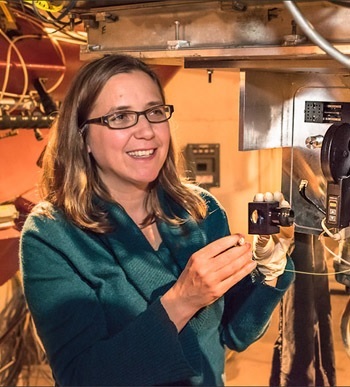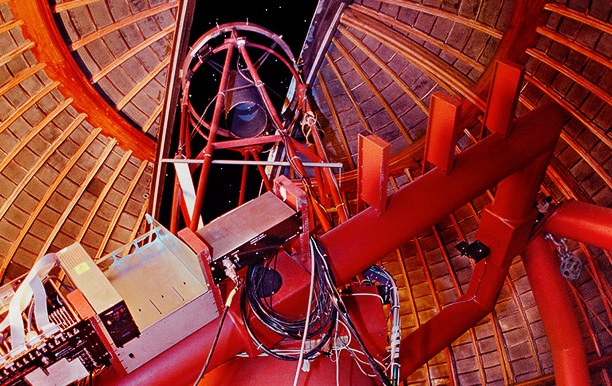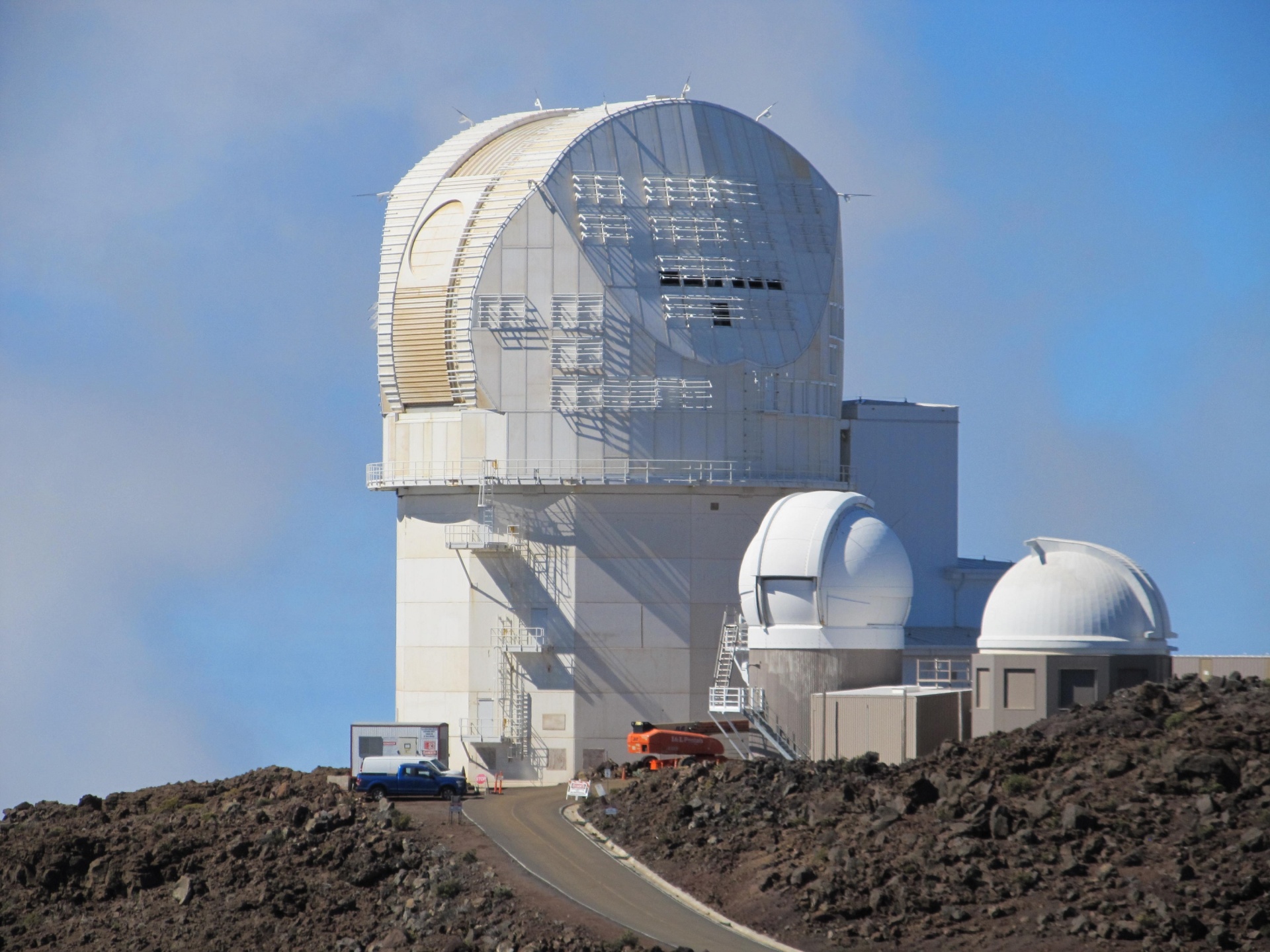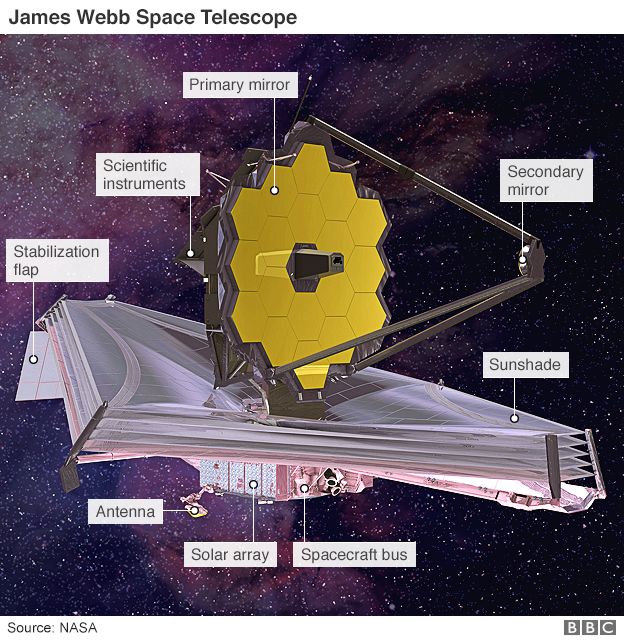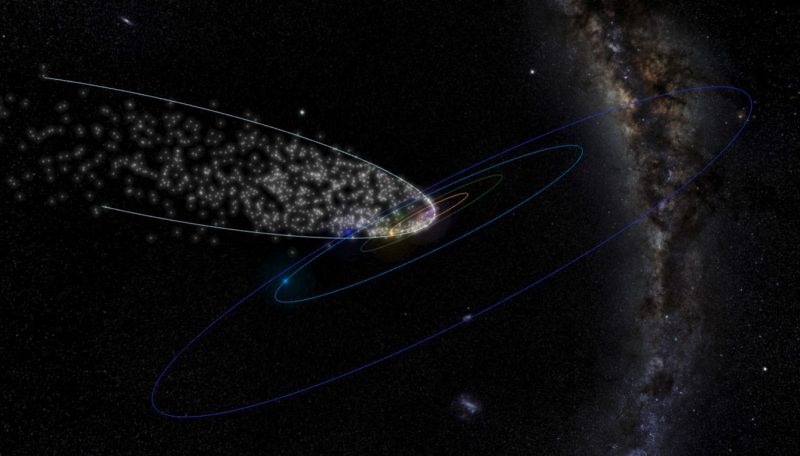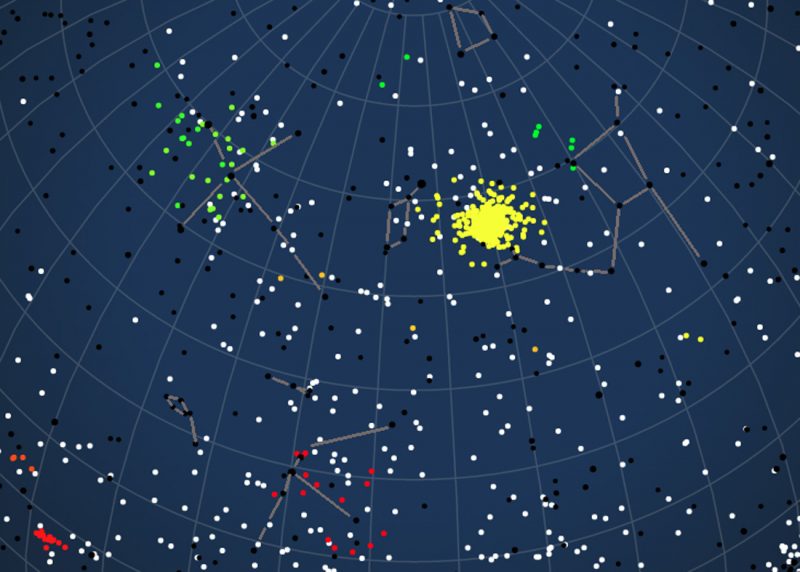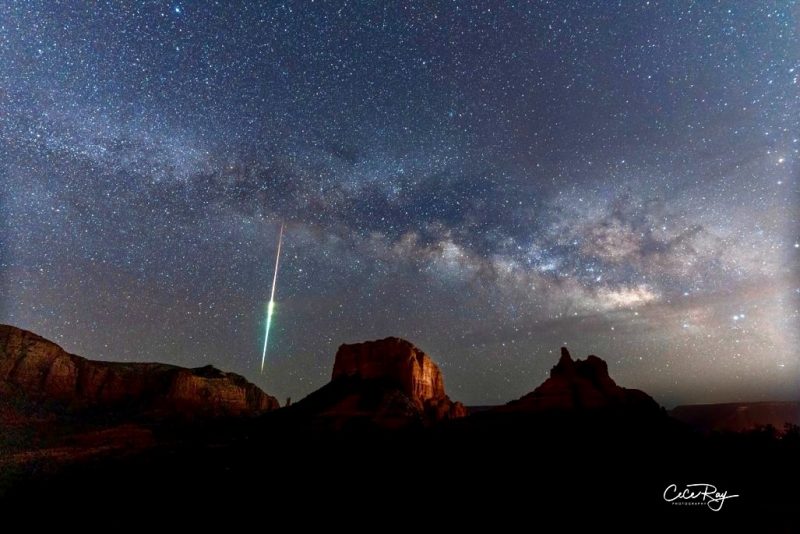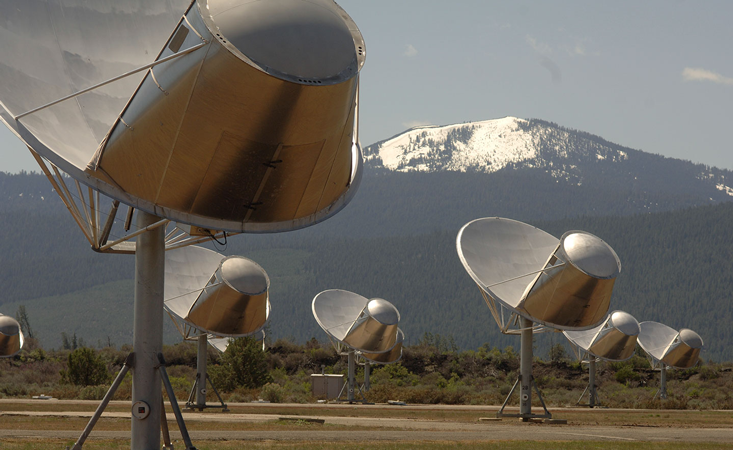From The MIT Technology Review
Credit: Ariel Davis
November 13, 2023
Adam Mann
The Biggest Questions is a mini-series that explores how technology is helping probe some of the deepest, most mind-bending questions of our existence.
In 1977, The New York Times published an article titled “Seeking an End to Cosmic Loneliness,” describing physicists’ attempts to pick up radio messages from aliens. The endeavor, known as the Search for Extraterrestrial Intelligence (SETI), was still in its early stages, and its proponents were struggling to persuade their peers and Congress that the idea was worth funding.
The quest to determine if anyone or anything is out there has gained greater scientific footing in the nearly half-century since that article’s publication. Back then, astronomers had yet to spot a single planet outside our solar system. Now we know the galaxy is teeming with a diversity of worlds. Our planet’s oceans were once considered exceptional, whereas evidence today suggests that numerous moons in the outer solar system host subsurface waters.
Our notion of the range of environments where life could exist has also expanded thanks to the discovery on Earth of extremophile organisms that can thrive in places far hotter, saltier, acidic, and more radioactive than previously thought possible, including creatures living around undersea hydrothermal vents.
We’re now getting closer than ever before to learning how common living worlds like ours actually are. New tools, including machine learning and artificial intelligence, could help scientists look past their preconceived notions of what constitutes life. Future instruments will sniff the atmospheres of distant planets and scan samples from our local solar system to see if they contain telltale chemicals in the right proportions for organisms to prosper.
________________________________
Breakthrough Listen Project





Newly added

________________________________
“I think within our lifetime we will be able to do it,” says Ravi Kopparapu, a planetary scientist at NASA’s Goddard Space Flight Center in Maryland. “We will be able to know if there is life on other planets.”
While humans have a long history of speculating about distant worlds, for much of that time actual evidence was in short supply. The first planets around other stars—known as exoplanets—were discovered in the early 1990s, but it took until the launch of NASA’s Kepler space telescope in 2009 for astronomers to understand how common they were.

Kepler carefully monitored hundreds of thousands of stars, looking for tiny dips in their brightness that could indicate planets passing in front of them. The mission helped the number of known exoplanets rise from a mere handful to over 5,500.
Kepler was built to help determine the prevalence of Earth-like planets orbiting sun-like stars at the right distance to have liquid water on their surface (a region often nicknamed the Goldilocks zone). While not a single extraterrestrial world has been a perfect twin of our own so far, researchers can use the sheer quantity of discoveries to make educated guesses as to how many might be out there. The current best estimates suggest that anywhere between 10% and 50% of sun-like stars have planets like ours, leading to numbers that make astronomers’ heads swim.
“If it’s 50%, that’s bonkers, right?” says Jessie Christiansen, an astrophysicist at Caltech in Pasadena, California. “There are billions of sun-like stars in the galaxy, and if half of them have Earth-like planets, there could be billions of habitable rocky planets.”
Is there anybody home?
Determining whether these planets actually contain organisms is no easy task. Researchers must capture the faint light from an exoplanet and spread it into its constituent wavelengths, scanning for signatures that indicate the presence and amount of different types of chemicals. While astronomers would like to focus on sun-like stars, doing so is technically challenging. The mighty new James Webb Space Telescope (JWST) is currently training its 6.5-meter mirror and unparalleled infrared instruments on worlds around stars smaller, cooler, and redder than our sun, known as M dwarfs.

Such places might be habitable, but at the moment, nobody is really sure.
For liquid water to be present on their surfaces, planets around M dwarfs would need to orbit close to their stars—which tend to be more active than the sun, sending out violent flares that could strip away atmospheric gases and likely leave the ground a dry husk. JWST has been investigating Trappist-1, an M dwarf 40 light-years away with seven small rocky worlds, four of which are at the right distance to potentially have liquid water.



The two closest exoplanets have already been shown to be devoid of atmospheres, but scientists are eagerly awaiting the results of Webb observations from the next three. They want to know if even those outside the habitable zone can have atmospheres.
There’s special interest in looking for other planets around M dwarf stars, because they are far more prevalent than sun-size stars. “If they find them to hold atmospheres, that increases the habitable real estate of the galaxy a hundredfold,” says Christiansen.
Once we’ve found a planet that looks a lot like Earth, then we’ll want to start hunting for chemical clues of life on its surface. Webb isn’t sensitive enough to do that, but future ground-based instruments like the Extremely Large Telescope, Giant Magellan Telescope, and Thirty Meter Telescope—which are expected to begin taking data in the 2030s—could tease out the chemical components of nearby Earth-like worlds.



Information from more distant targets will have to wait for NASA’s next planned flagship mission, the space-based Habitable Worlds Observatory, expected to launch sometime in the late 2030s or early 2040s.

The telescope will use either an external star shade or an instrument called a coronagraph to block the glaring light of a star and home in on dimmer planetary light and its potential molecular fingerprints.
Which chemicals in particular astronomers should be looking for remains a matter of debate. Ideally, they want to find what are known as biosignatures—molecules like water, methane, and carbon dioxide present in amounts similar to what we find on Earth. What that means in practice isn’t always clear, since our planet has gone through many periods when it contained life yet the quantities of different chemicals varied wildly.
“Do you want it to detect an Archaean Earth, like 2 or 3 billion years ago?” asks Kopparapu. “Or from the Neoproterozoic, where there was a snowball Earth? Or do you want to detect the current Earth, where there is a lot of free oxygen, ozone, water, and CO2?”
There was much excitement recently when Webb spotted dimethyl sulfide-a molecule that on our world is made only by living things-on an exoplanet nearly nine times Earth’s size located 120 light-years away. The results which have yet to be confirmed, highlight the trickiness of such methods. If dimethyl sulfide is truly present in the planet’s atmosphere, then starlight should also break it down to form ethane, a molecule that has yet to be seen. “No single gas is a biosignature,” says Kopparapu. “You need to see a combination of them.” Last year, he and others in the community published a report emphasizing that any particular finding must be placed in the context of its stellar and planetary environment, since there could be many results that seemingly point to life yet have alternative explanations.
What counts as life?
This problem—how to definitively differentiate between life and non-life—is a perennial one, whether you’re looking at distant planets or even phenomena here on Earth. Researchers may soon receive help from algorithmic techniques that can tease out associations too complex for the human brain to fathom. In recent experiments, Robert Hazen and his colleagues took 134 living and non-living samples (including petroleum, carbon-rich meteorites, ancient fossils, and a wasp that flew into their lab), vaporized them, and spread out their chemical constituents. Roughly 500,000 different attributes were identified within each sample’s molecular makeup and run through a machine-learning program.
“When we look at those 500,000 attributes, there are patterns that are unique to living things and patterns unique to non-living things,” says Hazen, a mineralogist and astrobiologist at the Carnegie Institution for Science.
After the software was trained on 70% of the specimens, the technique was able to recognize with 90% accuracy which of the remaining samples had a biological origin. The device that is used to spread out the chemical components of the samples is around seven inches long, small enough to be sent on missions to nearby ocean worlds like Jupiter’s Europa or Saturn’s Enceladus. NASA’s Perseverance rover carried a similar instrument to Mars, so Hazen thinks his team’s machine-learning algorithm could be adapted to sift through its data and hunt for organisms past or present there. And because it relies on molecular relationships rather than detecting specific organic chemicals like DNA or amino acids, which may not be used in other biospheres, the method could allow scientists to look for life entirely unlike what we have on Earth.
Such machine-learning applications are also starting to find use in SETI, which has in recent years pivoted toward looking for a broader array of visible evidence for tool-using extraterrestrial species than before. Most in the field are on the lookout for such technosignatures, defined as “some remotely detectable signature of technology that we can characterize with astronomical instrumentation,” says Sofia Sheikh of the SETI Institute. This could be a radio signal, but other evidence could include things like optical laser pulses, giant space-based engineering projects, atmospheric pollution, or even artificial probes that make their way to our solar system.
At the Zwicky Transient Facility near San Diego, California, which continuously searches the entire night sky for brief flashes of light coming from unknown sources, engineers are teaching artificial intelligence how to identify features that would not be expected from natural phenomena.


“It’s at that point that we can start asking questions,” says Ashish Mahabal, an astronomer and data scientist at Caltech. The answers to such questions could help reveal novel astronomical events or, just maybe, a star surrounded by enormous solar panels that feed an energy-intensive alien society.
SETI researchers hope that by using such tools, they can help overcome some of their anthropocentric biases. Most recognize that our expectations of otherworldly beings are constrained by our own experience. For example, the search for signs of massive alien solar panels is often “based on this assumption that there’s always going to be an exponential need for energy,” says Sheikh.
Because of all the avenues currently being explored, many scientists believe that answers to our questions about extraterrestrial life are not far off. Yet ultimately, the question of our cosmic loneliness is a philosophical one.
For most of humanity’s history, we didn’t believe ourselves to be alone. We filled the heavens with gods, monsters, and mythic creatures. It is only in the modern age that our species has started to worry about its place in the universe. But whether or not any other part of it harbors life, the cosmos is our home. We can choose to be lonely or to embrace the beauty and wonder all around us.
_____________________________________________
Conspicuously missing from this article:

What is life? How does it begin? Are we alone? These are some of the questions we ask in our quest to learn about and share the wonders of the universe. At the SETI Institute we have a passion for discovery and for passing knowledge along as scientific ambassadors.
The SETI Institute is a 501 (c)(3) nonprofit scientific research institute headquartered in Mountain View, California. We are a key research contractor to NASA and the National Science Foundation, and we collaborate with industry partners throughout Silicon Valley and beyond.
Founded in 1984, the SETI Institute employs more than 130 scientists, educators, and administrative staff. Work at the SETI Institute is anchored by three centers: the Carl Sagan Center for the Study of Life in the Universe (research), the Center for Education and the Center for Outreach.
The SETI Institute welcomes philanthropic support from individuals, private foundations, corporations and other groups to support our education and outreach initiatives, as well as unfunded scientific research and fieldwork.
A Special Thank You to SETI Institute Partners and Collaborators
• Campoalto, Chile, NASA Ames Research Center, NASA Headquarters, National Science Foundation, Aerojet Rocketdyne,SRI International
Frontier Development Lab Partners
• Breakthrough Prize Foundation, The European Space Agency [La Agencia Espacial Europea] [Agence spatiale européenne][Europäische Weltraumorganization](EU), Google Cloud, IBM, Intel, KBRwyle. Kx Lockheed Martin, NASA Ames Research Center, Nvidia, SpaceResources Luxembourg, XPrize
In-kind Service Providers
• Gunderson Dettmer – General legal services, Hello Pilgrim – Website Design and Development Steptoe & Johnson – IP legal services, Danielle Futselaar

March 23, 2015
By Hilary Lebow

Astronomers are expanding the search for extraterrestrial intelligence into a new realm with detectors tuned to infrared light at UC’s Lick Observatory. A new instrument, called NIROSETI, will soon scour the sky for messages from other worlds.




There is also an installation at Robert Ferguson Observatory, Sonoma, CA aimed West for full coverage [no image available].
SETI Institute – 189 Bernardo Ave., Suite 100
Mountain View, CA 94043
Phone 650.961.6633 – Fax 650-961-7099
Privacy Policy – Questions and Comments
Also previously in the hunt, but not a part of the SETI Institute
 SETI@home, a BOINC [Berkeley Open Infrastructure for Network Computing] project originated in the Space Science Lab at UC Berkeley.
SETI@home, a BOINC [Berkeley Open Infrastructure for Network Computing] project originated in the Space Science Lab at UC Berkeley.
See the full article here .
Comments are invited and will be appreciated, especially if the reader finds any errors which I can correct. Use “Reply” at the bottom of the post.

five-ways-keep-your-child-safe-school-shootings
Please help promote STEM in your local schools.
The mission of “The MIT Technology Review” is to equip its audiences with the intelligence to understand a world shaped by technology.









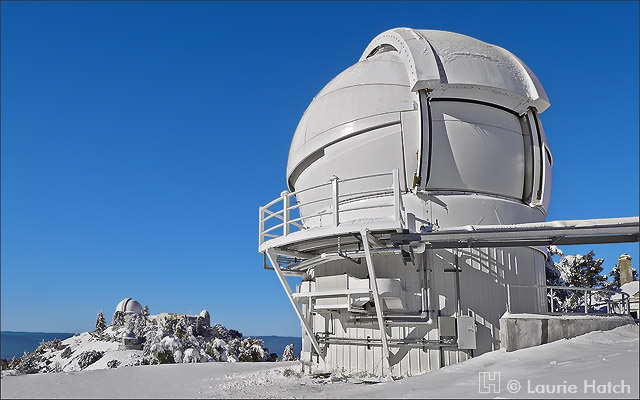




 SETI Institute
SETI Institute 
